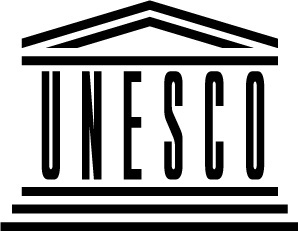 |
UNESCO World Heritage for India |
 |
|---|
UNESCO World Heritage Sites represent some of the best natural, cultural and historic attractions in world travel. Below are details of the 35 cultural, natural and mixed sites inscribed for India to date (a red World Heritage symbol denotes a site currently regarded as endangered). For more details of these properties, click on the links to the UNESCO website and the photographic galleries of these sites from OurPlace (where available) or see our highlights of India for descriptions. Also, check out UNESCO's Intangible Cultural Heritage for India below.
 | 1983 - Ellora Caves | Cultural site | |
|---|---|---|---|
 | 1983 - Taj Mahal | Cultural site |
 |
 | 1983 - Ajanta Caves | Cultural site | |
 | 1983 - Agra Fort | Cultural site |
 |
 | 1984 - Group of Monuments at Mahabalipuram | Cultural site | |
 | 1984 - Sun Temple, Konârak | Cultural site |
 |
 | 1985 - Keoladeo National Park | Natural site | |
 | 1985 - Manas Wildlife Sanctuary | Natural site | |
 | 1985 - Kaziranga National Park | Natural site | |
 | 1986 - Khajuraho Group of Monuments | Cultural site | |
 | 1986 - Group of Monuments at Hampi | Cultural site | |
 | 1986 - Fatehpur Sikri | Cultural site |
 |
 | 1986 - Churches and Convents of Goa | Cultural site | |
 | 1987 - Group of Monuments at Pattadakal | Cultural site | |
 | 1987 - Elephanta Caves | Cultural site | |
 | 1987 - Great Living Chola Temples | Cultural site | |
 | 1987 - Sundarbans National Park | Natural site | |
 | 1988 - Nanda Devi and Valley of Flowers National Parks | Natural site |
 Taj Mahal |  Ellora Caves |  Ajanta Caves |  Agra Fort |
 | 1989 - Buddhist Monuments at Sanchi | Cultural site | |
|---|---|---|---|
 | 1993 - Qutb Minar and its Monuments, Delhi | Cultural site |
 |
 | 1993 - Humayun's Tomb, Delhi | Cultural site |
 |
 | 1999 - Mountain Railways of India | Cultural site |
 |
 | 2002 - Mahabodhi Temple Complex at Bodh Gaya | Cultural site |
 |
 | 2003 - Rock Shelters of Bhimbetka | Cultural site | |
 | 2004 - Chhatrapati Shivaji Terminus (formerly Victoria Terminus) | Cultural site |
 |
 | 2004 - Champaner-Pavagadh Archaeological Park | Cultural site | |
 | 2007 - Red Fort Complex | Cultural site |
 |
 | 2010 - Jantar Mantar | Cultural site | |
 | 2012 - Western Ghats | Natural site | |
 | 2013 - Hill Forts of Rajasthan | Cultural site | |
 | 2014 - Great Himalayan National Park Conservation Area | Natural site | |
 | 2014 - Rani-ki-Vav (the Queen’s Stepwell) at Patan, Gujarat | Cultural site | |
 | 2016 - Khangchendzonga National Park | Mixed site | |
 | 2016 - Archaeological Site of Nalanda Mahavihara (Nalanda University) at Nalanda, Bihar | Cultural site | |
 | 2016 - The Architectural Work of Le Corbusier, an Outstanding Contribution to the Modern Movement | Cultural site |
 Fatehpur Sikri |  Churches and Convents of Goa |  Qutb Minar and its Monuments, Delhi |  Humayun's Tomb, Delhi |

Intangible Cultural Heritage
Recently UNESCO has begun to document the world's Intangible Cultural Heritage which includes "traditions or living expressions inherited from our ancestors and passed on to our descendants, such as oral traditions, performing arts, social practices, rituals, festive events, knowledge and practices concerning nature and the universe or the knowledge and skills to produce traditional crafts". The current listings for India are shown below - click on the links for more details.
Representative List of the Intangible Cultural Heritage of Humanity


